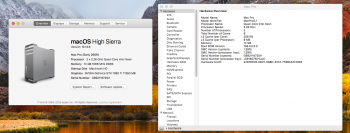No, the card is much longer than the 7101A and the fan was mostly exposed to free space. The card also ran on reduced voltage and never ran hot that I’m aware of.
It just gave up the ghost on a reboot surge I think.
I am a little concerned about the new card next to the 7101A however. It will definitely block the rear fan space.
How can I test for heat issue with that card once installed.
The easiest way of course still testing the card in Windows.
The PULSE also come with a way too high voltage. My card default to run at 1.15V and can be downvolt to 1.00V but still fully stable.
However, downvolt the PULSE ROM is not as easy as downvolt the 7970’s ROM. It will be really hard to fix a voltage, but much easier to mod the pointer to get a lower voltage, and then find the highest possible clock speed to for that voltage.
I have no time to make detail test yet, but I can easily find a pointer which make the card run at ~0.96V (but unstable at default 1366MHz). And I quickly test if the card can run stably at 1300MHz, it can. Then I mod the VBIOS to run with that voltage pointer and 1300MHz now.
I am sure I can push up the clock a bit more, 1300MHz is just randomly picked, but I have no interest to spend another 1-2 hours just to let the card run another 2-3% faster. In fact, quick test shows the card deliver similar performance as default setting in 10.13.6 (but about 1% slower in 10.14 beta).
After downvolt, the card draw about 20% less power, and run cooler with lower fan noise. Before undervolt, the card can go above 80C with 60% fan speed in a Unigine Valley test loop (the fan speed is defaulted to lock at 60% until really high temperature by the VBIOS for noise reduction). But after undervolt, the card can just touch 75C (default target temperature) at ~40% fan speed. Quite a big difference.
I can post the “how to” if you interested in that. There is another way just posted by another member about how to perform the soft mod via kext edit, but I am not 100% sure how to do that yet, I only know the “hard” way by modding the VBIOS.
Anyway, you can use terminal command to monitor the RX580 in MacOS. I’ve compared those number with the figure in Windows, they are reliable.












